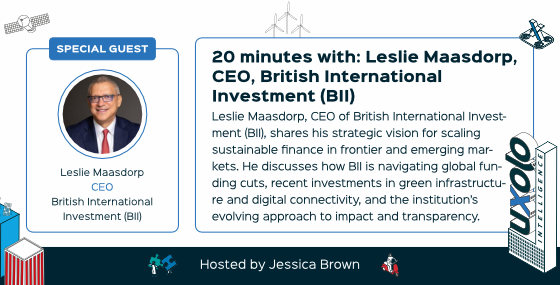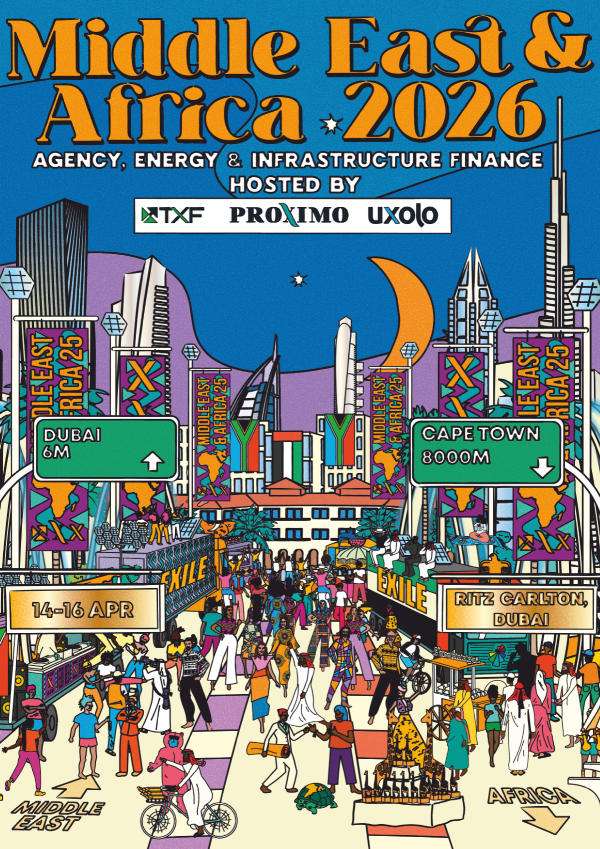SDG Loan Fund: Steps to scaling blended finance
The $1.1 billion SDG Loan Fund is one of the largest blended finance funds launched to date and follows a string of other landmark funds that have successfully tapped institutional capital, including the IFC MCPP and the ILX Fund. Nic Wessemius, MD of FMO Investment Management, talks to Uxolo about why the structure works for insurers and how future funds can scale.

At the end of November 2023, the SDG Loan Fund mobilised $1.1 billion of institutional capital via a first loss guarantee provided by FMO, wrapped with a $25 million guarantee from MacArthur Foundation, aimed at deploying 100-120 loans over a period of 25 years. Loans will target investments between $3 million and $20 million which advance SDGs 8 (Decent Work and Economic Growth), 10 (Reduced Inequality), and 13 (Climate Action). Allianz is responsible for managing the fund and FMO Investment Management for originating and managing the portfolio.
In general, development banks tend to target assets rated between B and BB but insurance companies' solvency requirements demand a significant amount of capital be kept against the books for underlying portfolios below investment grade.
To allay this challenge and attract the significant institutional investor base it did, the fund’s first loss facility was key says Wessemius: “... because of that, insurance companies could rate the fund internally at investment grade, which meant different capital requirements could kick in and it was much more efficient for them to allocate a larger pool of capital”.
While some other successful institutional capital mobilisation funds have pursued pari passu project investments – like the ILX Fund which has raised $1.05 billion from pension funds so far – the SDG Loan Fund opted for a blended structure. Wessemius explains, “the feedback we got from investors is that a buffer shows them the chance to lose money is much slimmer – pari passu would cost them too much capital to allocate meaningful amounts”.
It all comes down to the relative flexibility of the investor base: commercial banks and insurance companies are subject to a litany of post-financial crisis regulations. “Pension funds have a bit more freedom in what they can invest in”, Wessemius says.
A billion is good, how do you get more?
This is one of the biggest blended finance funds the market has seen so far. Both this fund, the ILX Fund, and the recent $3.5 billion IFC MCPP, show that institutional investors are a workable source of capital for development finance which thoughtful structuring built on a transparent dialogue can unlock.
As Wessemius explains, “in the end, development banks cannot solve the SDG gap alone – we need institutional capital for that. For them, it’s an efficient tool to have exposure in emerging markets and show support for the climate agenda – it’s just about structuring it in a way that they can actually take it on their balance sheet”.
The question, as always, still remains as to how more of this capital can be unlocked. ILX Fund CEO Manfred Schepers recently told Uxolo, “MDBs are playing this critical role as an intermediary to create transparency, standardisation and harmonisation in the emerging markets they operate in – and they do an outstanding job. The problem is that that business model has not yet turned itself to mobilising private finance – we are only at the beginning of that conversation”.
One solution could stem from providing open access to the GEMs database as a competitive option for attracting more private investors, which FMO has been an outspoken supporter of. In particular, Wessemius argues that while the GEMs’ outcomes on probability of default (PD) are roughly similar to the public tables available through the big three ratings agencies, the GEMs data on loss given defaults (LGD) and the recovery rates is actually sufficiently more attractive than that available elsewhere.
The reason for this, he explains, is that development banks have a vested interest in keeping clients afloat: “Our goal as an institution is to help our clients through a crisis and secure the impact – if you immediately go to foreclosure when your borrower does not pay your interest or misses a payment, you will also immediately destroy the impact you were trying to make”.
As a Basel II parameter, a promising LGD is a critical comfort for regulated investors which can be implemented into risk models and potentially allow for an increase in allocations. However, while discussions around opening GEMs are promising – the G20 have endorsed the idea of a stand-alone database, coined GEMs 2.0 – the original early 2024 deadline looks unlikely. GEMs is a consortium of 24 MDBs and DFIs which operates on consensus without a legal structure, so decisions on how data should be categorised without upsetting client confidentiality – an especially sensitive topic in countries that have only had a few projects so far – could take a long time.
The first data reports will likely be ready to come out by year-end, but this isn’t likely to be in a format good enough for institutional investors that want to run their own models. Alternatively, IFC was able to share its historical FI loan performance data bilaterally with investors in the MCPP, which likely included PG and LGD data points. That option could be enticing to other development banks, if it were open to them.
The Uxolo perspective
Iterations of billion dollar blended finance funds are increasing and as each type of development bank (DFI, MDB and regional MDB) reaches financial close on a structure that works for them, the more variety is available for the rest of the network to draw inspiration from.
While it is easy to ask why funds aren’t being replicated already, the reality is every structure has to be bespoke in order to fit the regulations of the development bank and/or of the target investor group(s). That will only happen with open dialogue between investors, development banks, and as regulators get comfortable with structures.
There is no doubt that opening up GEMs would enhance this, and one could ponder the relative value of protecting countries where deal flow is small and unlikely to attract private sector investors in comparison to the investment boost countries with better pipelines could experience with MDB data openly available. If the LGDs and PDs are as good as is being advertised, it is frustrating that GEMs information is kept behind closed doors when institutional capital is ready and waiting.





